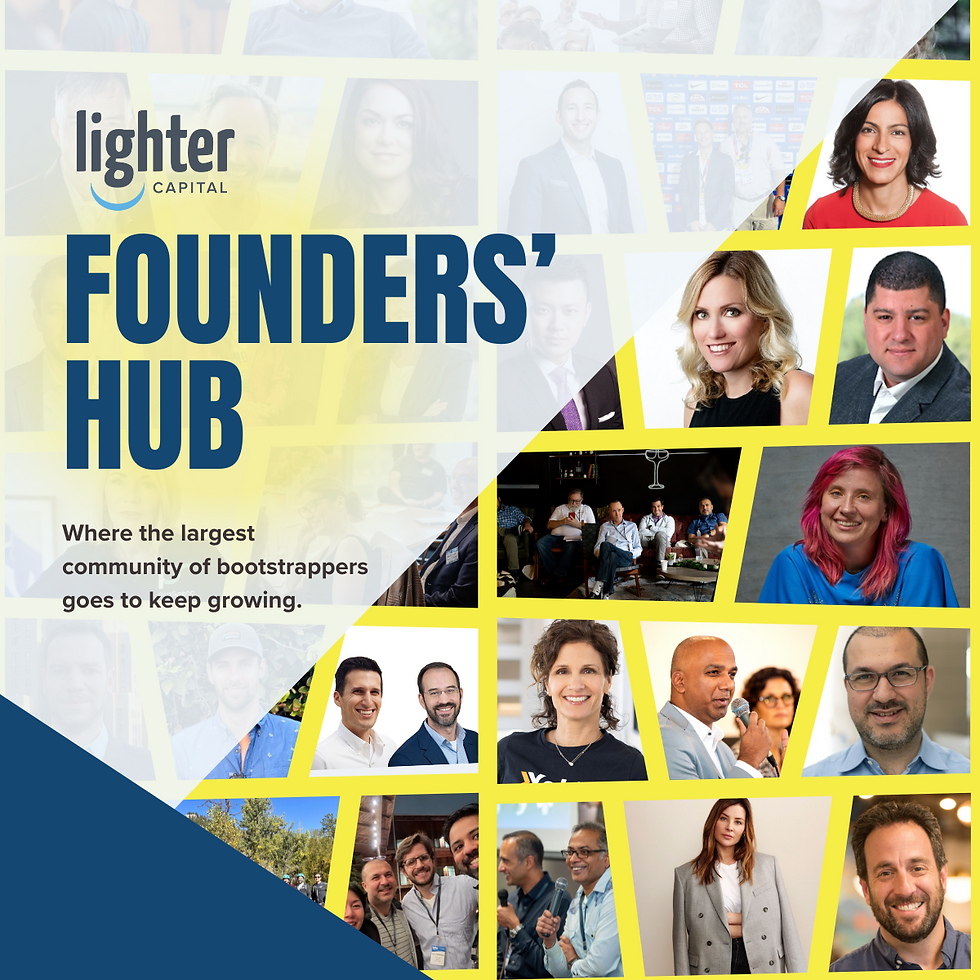Book Review – When: The Scientific Secrets to Perfect Timing, by Daniel Pink
- Lighter Capital

- Nov 29, 2018
- 4 min read
Updated: Aug 12, 2024
We are all familiar with the expression “timing is everything.“ From ice hockey to investing, success often depends on doing things at the right time. But how do we know when it is the right time? Sometimes we can play where the puck is going, or figure out the right moment to act by a careful read of the market, but in other cases the right time depends on us; it depends on us knowing when to do things.

Daniel Pink’s new book, When: The Scientific Secrets to Perfect Timing, looks at when we should do things to be the most efficient, the most productive, and the most inspired. The “when” he discusses is the time of day, the time of the year, or even the point in a project where we should or shouldn’t do certain things.
He poses a certain number of questions early in the book:
Why do beginnings—whether we get off to a fast start or a false start—matter so much? And how can we make a fresh start if we stumble out of the starting blocks? Why does reaching the midpoint—of a project, a game, even a life—sometimes bring us down and other times fire us up? Why do endings energize us to kick harder to reach the finish line yet also inspire us to slow down and seek meaning?
We’ve all experienced flagging interest in projects, or difficulty trying to make it through the day, the week, or the month, but we generally don’t think that we might have started — or continued our projects — at the wrong time.
The Science of Chronobiology
The science of chronobiology examines how time affects all living organisms. Pink references research that looks at how our emotions, feelings, and motivation and different change as we move through the day. It turns out that there is a regular oscillation that most people experience, with “a peak, a trough, and a rebound,” and that understanding this rhythm can help us be more productive and efficient. Both our mood and our emotional balance vary during the day according to this type of rhythm.


These variations in mood or energy can be seen in the way people react on Twitter, how effective CEO’s earnings calls are, how kids do on standardized tests, and how many medical errors occur. (Hint: if you’re having a colonoscopy, it’s best to do it as early in the morning as possible.)
Most of Us Are Third Birds
Not everyone is exactly the same; we have different chronotypes, our “personal pattern of circadian rhythms that influences our physiology and psychology.” People have long been classified as larks or owls, because of their preference for mornings or evenings. Pink says that, in reality, most of us are “third birds,” or somewhere in the middle.

Knowing your personal chronotype can help you better schedule important meetings, presentations, and even down time, so your days can be more in line with your body’s reactions to time. Because “All of us experience the day in three stages — a peak, a trough, and a rebound. And about three-quarters of us (larks and third birds) experience it in that order. But about one in four people, those whose genes or age make them night owls, experience the day in something closer to the reverse order — recovery, trough, peak.”
The Importance of Planning Your Schedule
Don’t worry, Pink offers links to websites where you can find out your own chronotype, and gives advice as to when you should perform analytic tasks, insight tasks, tasks involving making an impression, and those where you need to make a decision. With this in mind, it’s a good idea to plan your schedule when you will be best prepared for any important activities you have, such as business meetings, presentations, or brainstorming. (And don’t forget to factor in changes in time zone if you travel from one part of the world to another.)
Pink doesn’t only look at the day, but also how long-term projects also have an early peak, then a trough, before climbing back up as we reach the finish line. He explains why these “Midpoints are both a fact of life and a force of nature,” and how we need to be aware of them so we can turn them into “sparks.” And he looks at how important dates — such as the first of the year, the first of the month, a birthday, or other important date — can have a big influence on how we get out of the gate to start something new.
Why Read When: The Scientific Secrets to Perfect Timing?
Interspersed among the chapters of this book are short sections called Time Hacker’s Handbook, where Pink gives practical tips for understanding and working with these variations in our energy and efficiency. You’ll learn how to make your days better through restorative breaks, how to better deal with fluctuations that affect long-term projects, and how to bring things to a successful close.
Pink closes the book by summing up all he learned when writing it, saying the many things he used to believe about time and timing. As he says, “I used to believe that timing was everything. Now I believe that everything is timing.”






